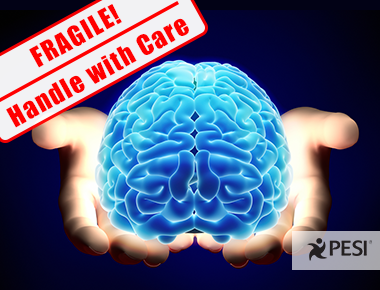Suicide Risk Assessment: A must for clients reporting TBI and Depression

There have been many reports recently of athletes in the news discussing head trauma and the effects it has on the brain.
In May of 2016, a news report sadly revealed that former Detroit Lions quarterback, Erik Kramer, attempted suicide by way of gunshot wound to the head. His former wife attributes this suicide attempt to Major Depressive Disorder (MDD), a disorder that may have been caused by football related head trauma or traumatic brain injury (TBI).
Research has indicated that Major Depressive Disorder (MDD) is one of the most common conditions that patients encounter following a TBI. Some TBI patients report symptoms of MDD at least once in the first year after their injury. These patients may also report suicidal ideation—a symptom of mild to severe MDD— or even actual suicide attempts.
There are several factors that may lead to the development of depression following a TBI, and these factors vary greatly among those diagnosed with the condition. Depression symptoms could be related to organic, physical changes in the brain as a result of injury to areas that control and regulate emotion and mood, or they could be caused by changes in the levels of certain natural chemicals (neurotransmitters) in the brain.
It shouldn’t be surprising that some patients with TBI are suffering from symptoms of MDD. The effect of TBI on both the family and the injured person can be devastating. Loss of memory, mood swings, headache, difficulty thinking, and frustration are common in mild TBI injuries. For those suffering from severe TBI, symptoms can include limited function of their limbs, loss of thinking ability and emotional problems. As TBI patients adjust to temporary or enduring changes in their physical and cognitive abilities, it can lead to major role changes within the family and society.
It is imperative that, we, as mental health professionals, recognize this correlation between TBI and depression and conduct a brief or, if warranted, a more extensive suicide risk assessment with a patient who reports mild or more severe forms of TBI. Litigation becomes an issue when we fail to conduct these assessments appropriately and when we do not make reasonable and prudent efforts to accurately assess, diagnose and address patient concerns.
Here are a few questions I pose to audience members attending my Suicide and Non-Suicidal Self Injury seminar, when discussing suicide risk assessment and legal implications. You may find these questions helpful when determining a course of treatment with your clients.
Were You Negligent?
- Was the clinician aware or should have been aware of the risk?
- Was the clinician thorough in assessment of the client’s suicide risk?
- Did the clinician make “reasonable and prudent efforts” to collect sufficient and necessary data to assess risk?
- Was the assessment data misused, thus leading to a misdiagnosis where the same data would have resulted in appropriate diagnosis by another mental health professional?
- Did the clinician mismanage the case, being either “unavailable or unresponsive to the client’s emergency situation?”
This post was contributed by PESI speaker and author Meagan Houston, Ph.D., SAP. Check out her new book Treating Suicidal Clients & Self-Harm Behaviors. This is the most comprehensive, practical and user-friendly workbook to help save lives.
Do you want to go beyond just book knowledge of suicide? Suicide & Non-Suicidal Self Injury is an online seminar featuring Dr. Meagan Houston where she takes a candid, innovative and front line approach to assessing and providing treatment to clients who present with suicidal and self-destructive behaviors. Learn how to assess and treat suicidal patients, and walk away with clinical tools to develop a suicide risk assessment that protects the clinician both ethically and legally.
✔ Tips to recognize key suicidal behaviors and self-destructive behaviors
✔ Crisis intervention techniques
✔ Medication and psychotherapeutic treatments
✔ DSM-5® disorders and suicidal behavior
✔ Special populations and suicide risk
✔ Social media, tele-therapy and suicidal patients
✔ Learn to develop a comprehensive and “legally sound” suicide risk assessment
✔ Interactive Case Studies
Topic: Suicide and Self-Harm
Tags: Depression | Traumatic Brain Injury (TBI)




